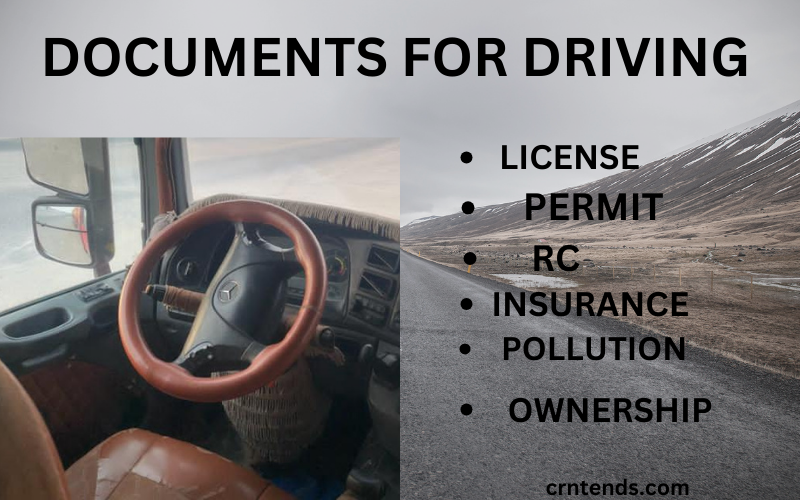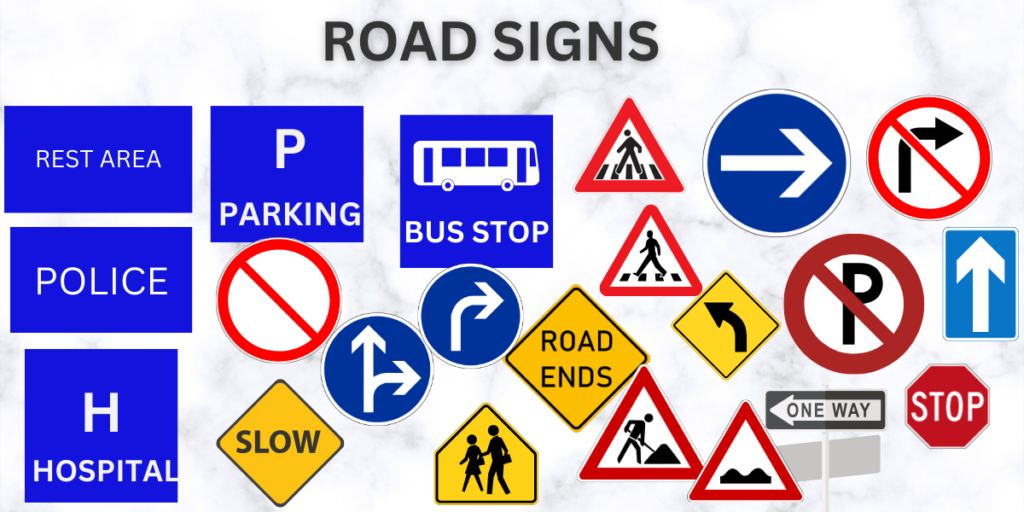Operating a vehicle, be it a car, truck, motorcycle, or any other motorized mode of transportation, on a road or other designated area is referred to as driving. It requires the coordination of various skills, knowledge, experience, and judgement to ensure the safe and efficient movement of the vehicle. Driving with responsibility and attentiveness is a commitment to promoting road safety and the overall efficiency of transportation systems. It entails making prudent decisions, abstaining from risky behavior, and showing consideration for other road users.here is some tried-and-true driving tips for novice and expert drivers, derived from the outstanding professional driver Pritipal Singh’s expertise.
Driving Tips For New and Professional Drivers

Table of Contents
Inspection Of The Vehicle
“Inspection of the vehicle” is an essential component of safe driving practices and traffic laws. Maintaining and inspecting your vehicle on a regular basis lowers the likelihood of malfunctions and accidents by ensuring that it is in good operating order. As a driving tip, consider the following important points about vehicle inspections:
Fluid Levels: Engine oil, transmission fluid, brake fluid, coolant, and windshield washer fluid levels should all be monitored and maintained. Vehicle faults might result from low fluid levels.
Check Air Pressure Levels: Air pressure level of tyres and breaks must be proper before driving.
Check temprature level of your engine– Make sure your engine is running at the right temperature by checking it.Your vehicle will be impacted if the temperature is low.The temperature range for large vehicles is 40 to 80 degrees.
Adjust Mirrors: Before driving adjust and clean side mirrors or hood mirrors of your vehicles to ensure optimal visibility. Properly adjusted mirrors help eliminate blind spots and enhance overall safety.

Hoses and Belts: Check belts and hoses for fraying, cracks, or evidence of wear. Replace any broken parts to avoid future malfunctions.
The exhaust system: Look for any leaks, strange noises, or exhaust system rust. Maintaining an exhaust system properly helps make a vehicle more environmentally friendly and fuel-efficient.
Suspension Mechanism: Keep an eye on how the vehicle handles and listen for any strange noises or sensations. Problems with the suspension system may impact the vehicle’s overall stability.
Emergency Provisions: Keep basic tools, a first aid kit, a flashlight, a jack, a spare tire, and jumper cables in your vehicle’s emergency kit. In the event of emergencies or unanticipated breakdowns, being ready can be crucial.
Appropriate Documentation
In the event of a traffic check, having the appropriate paperwork not only guarantees that you are in compliance with the law but also makes communication with law enforcement officers easier. It keeps the driving environment orderly and compliant with the law while also improving overall road safety. you stay clear of any legal problems when traveling, be sure you constantly review and update your documentation. This is a crucial component of driving legally and responsibly. As a driving tips consider these important concerns about appropriate documentation:
Driver’s License: Always keep your driver’s license up to date. It acts as formal proof that you are qualified to drive a vehicle legally. It is illegal to drive without a valid driver’s license.
Registration Certificate: Make sure the relevant authorities have your vehicle registered correctly. As needed by local laws, display the registration sticker or tag on your vehicle.
Documents related to insurance: Make sure your vehicle is insured and in good standing. It is essential to have current insurance papers in case of an accident or a traffic check. It exhibits fiscal responsibility and adherence to legal mandates.
Certificates of Emission and Vehicle Inspection: Vehicles may need to pass emissions testing or routine inspections, depending on the jurisdiction. Maintain the appropriate license plates or stickers on your vehicle as evidence of your compliance.

Contact Details in Case of Emergency: Keep your emergency contact information close at hand, particularly if local laws demand it. This could contain contact information for a family member or an emergency contact in the event of an accident.
Ownership Documents: Carry a letter of authorization from the owner and, if necessary, a copy of their identification if you are not the vehicle’s registered owner.
Permit to Drive Specialized Vehicles: Make sure you have the required paperwork and permits if you are operating a specialist vehicle, such as a commercial truck or a vehicle that needs a specific permit.
Respect for Local Laws: Recognize and abide by any special documentation requirements in the region in which you are operating a vehicle. Regulations pertaining to the kinds of documentation drivers must carry may differ between locations.
Traffic Rules
Limits on Speed: Follow the posted speed restrictions. Exceeding speed limits can result in accidents and legal repercussions because they are set in place to protect all users of the road.

Signals for traffic: Observe all traffic signals, such as stop signs and traffic lights. Respecting these signals at intersections helps to control traffic flow and avoid collisions.
The right of way: Recognize the right of way and give it when necessary. When it’s appropriate, give way to other vehicles or pedestrians, and abide by the traffic laws dictating who has the right of way in different circumstances.
No Driving While Intoxicated: Never use drugs or alcohol while operating a vehicle. Not only is it against the law to drive while intoxicated, but it also puts you and other drivers in grave danger.
Use of Seat Belts: Make sure every passenger in your car buckles up, and wear your seat belt at all times. In an accident, seat belt use is essential for preventing injuries.

Avoid Distracted Driving: Steer clear of things that divert your concentration from driving, such as texting, talking on the phone, or even adjusting the radio, can lead to accidents. Driving without distractions increases safety. Keep your attention on the road at all times, and if necessary, pull over to address any distractions.
Observe Lane Discipline: Maintain correct lane discipline by staying in your lane. To indicate lane changes, use turn signals; do not weave across lanes.
Parking Guidelines: Respect parking restrictions, such as time limits, designated parking zones, and any additional guidelines that may be in effect at a certain place.
Road Signs
Recognizing Symbols: Become familiar with the numerous symbols used on road signs. Distinct forms, hues, and emblems communicate particular meanings regarding guidelines, alerts, and directions while driving.
Signs of Regulation: Regulatory signs draw your attention to laws and regulations that need to be obeyed. Stop signs, yield signs, and speed limit signs are a few examples.
Warning Signs: Pay attention to warning signs about potential risks, such as crossroads, bends, pedestrian crossings, and animal crossings. Make the appropriate driving adjustments.

Informational Signs: Directions regarding routes, distances, and services are provided by informative signs. Keep an eye out for indicators that will aid in your navigation and efficient route planning.
Signs for construction and work zones: Signs may signal altered traffic patterns, lowered speed limits, or the presence of construction workers, so pay attention to them when you are in a construction zone.
Signs designating the school zone: Signs in school zones, which indicate lowered speed restrictions during specific hours and advise drivers to use caution in places where children are present, should be especially noticed.
One-way and no-entry signs: Pay attention to no-entry zones and obey directional indications, such as one-way signs. Disregarding these indicators may result in hazardous driving circumstances and legal ramifications.
Signs for Lane Usage: Pay attention to signage designating particular lane usage, such as turning lanes, carpool lanes, or lanes reserved for particular kinds of cars.
Over The Shoulder Check
It’s critical to carry out an over-the-shoulder check, which involves tilting your head to look directly into any places that your mirrors could miss, in order to make up for blind spots. This is crucial when changing lanes or swerving into oncoming traffic.If blind spots are not appropriately handled, hazardous circumstances may arise.
Use Your Turn Signal
Use Your Turn Signals: By indicating that you want to merge or change lanes, you give other drivers advance notice and an opportunity to react. always pass the other vehicle from the driver’s side. employing indicators to ensure correct passing.
Check Blind Spot
Prior to changing lanes, it is always advisable to do an over-the-shoulder check for blind spots. This additional safety measure guarantees that there are no vehicles hiding in your blind areas.
In driving, the term “blind spot” describes the region surrounding your vehicle that is not visible from your mirrors. It’s important to be aware of these blind spots since they may conceal pedestrians, other cars, or obstructions, which could be dangerous when changing lanes or making other moves.
Stay Aware Of Surroundings
Pay attention to the traffic around you and prepare for any circumstances that could cause a blind spot. Keep an eye on the vehicles around you by periodically checking your mirrors.be aware , and be ready to react to the actions of other drivers.
Adjust To Weather Conditions
Different driving strategies are needed for different weather conditions. When driving in rain, snow, fog, or other unfavorable weather, modify your speed and driving style accordingly. To improve visibility, make use of the headlights, windshield wipers, and other safety measures.Heavy trucks are not permitted to drive in fog. Park your vehicle safely in case of foggy area.
Maintain a Proper Distance
Rear-end collisions are less likely when there is an appropriate spacing maintained. You will have time to respond and stop safely if the car in front of you suddenly stops or slows down if you have enough distance.This is essential for reacting to unforeseen circumstances, like abrupt lane changes, roadblocks, or other drivers’ activities.
When the weather is nice, keep a 20-meter buffer between you and other vehicles. In inclement weather, keep a 40-meter buffer between your vehicle and other vehicles.
Avoid Fatigue and Take Breaks
Driving while exhausted is a surefire way to end badly. Before starting a lengthy travel, make sure you are well-rested, and take breaks to maintain your focus and alertness. Make your health a priority because fatigue might affect your ability to respond quickly and make decisions.Avoid eating a large meal before driving as it can make you drowsy.
Stay Calm While Driving
Although traffic bottlenecks and clogged highways might be annoying, remaining composed is crucial. Steer clear of aggressive driving techniques like weaving across traffic or tailgating. Being patient when driving makes for a more secure and peaceful driving experience.
Some General Driving Tips
- After taking any form of medication, never operate a vehicle.
- Avoid using narcotics, alcoholic energy drinks, alcohol, and other substances while operating a motor vehicle on a regular basis as they may have negative health effects.
- Bring water bottles with you.
- When driving, wear shoes at all times.Sleepers may pose a risk or be prohibited.
- Avoid using pressure horns in urban areas, particularly those close to hospitals or schools.
- Avoid aggressive driving behaviour.
- Avoid listening loud music while driving.
ALSO READ OUT SOME PRACTICAL TRAVEL HACKS

Very good